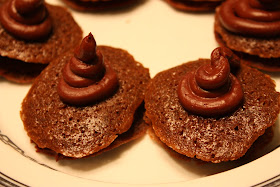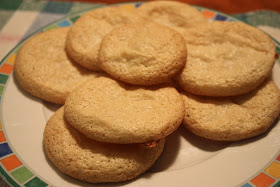Tuesdays with Dorie: Baking with Julia - 68th installment. The recipe is Alsatian Onion Tart.
Imagine my surprise when I read the recipes for November and realized that DARN, I don't have any pastry scraps left from October's puff pastry extravaganza, and now I need to make a new batch for Alsatian Onion Tart. I was all ready to get out the food processor when I decided to look up how Julia herself (rather than Michel Richard, the contributor of the recipe in Baking with Julia) would make the puff pastry. I pulled out my copy of Julia's
The Way to Cook, and decided to follow her recipe for pastry, and then do M. Richard's Alsatian Onion Tart.
The Way to Cook has a simpler sequence of steps, without the package method. You cube the butter:
and then toss it in the mixture of cake and all-purpose flour:
After that, you use your hands (my method) or a stand mixer to mush the butter cubes until they are "the size of a fordhook lima bean" (!!). We had to look that one up, which led to a lengthy discussion about lima beans. The next step is to add water and mix up the whole mess on your work surface, eventually forming a messy rectangle, which you fold in thirds and then roll, just as in the traditional recipe. You "turn" it this way six times. Eventually the mess starts to look like dough:
except instead of layers of butter, you have lumps of butter throughout.
This seemed slightly easier than the other recipe, and dirtied fewer dishes (no food processor).
The Alsatian Onion Tart (the whole point of this escapade) was quite good. You cook a whole lot of chopped onions in chicken broth, blanch and then saute some bacon cubes, and pile the onions, with bacon on top, onto your pastry circle.
 |
| Tart before baking |
The pastry is quite easy to roll out, as long as you stay aware of flouring the surface to ensure it doesn't stick. I'm sure this was all easier because the temperature is rather cool right now - would not want to do this in August. I think it would have been even better baked on a baking stone to really crisp up the bottom. Everyone devoured it, and it also provoked a conversation about "where IS Alsace, and what is its history?" And I still have more puff pastry, so I won't be caught off-guard next time.... ;-)


















































